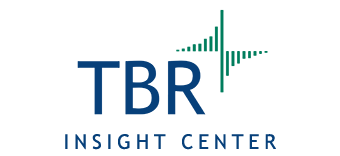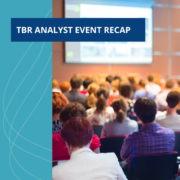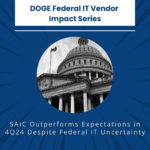Infosys Readies to Deliver Outcomes at Scale Through Enterprise AI
U.S. Analyst and Advisor Meet 2025, New York City, March 4, 2025 — Infosys hosted industry analysts and advisors for a packed afternoon in the company’s offices at One World Trade Center. Using client stories amplified through technology partner support to reinforce Infosys’ role in the IT services, cloud and enterprise AI market, company executives consistently returned to a few main themes, including delivering business outcomes, maintaining trusted relationships, and focusing on speed, agility and simplification.
Infosys’ hub-first strategy in the Americas demonstrates the company’s success with coinnovation and pursuit of large deals
Similar to previous events, Infosys kicked off the event with an update on the company’s strategy and performance in the Americas region. Anant Adya, Infosys EVP and head of Americas Delivery, led the presentation, highlighting key elements of the company’s success in the region, including its hub-first strategy; investments in and expansion of local talent pools, including in the U.S., Canada, Mexico, Brazil and the rest of LATAM; and strategic bets that are centered on delivering business outcomes and enabled through portfolio offerings such as Infosys Cobalt, Infosys Topaz and Infosys Aster..
Infosys’ six Tech Hubs across the U.S. remain the backbone of the company’s hub-first strategy. Located in Phoenix; Richardson, Texas; Raleigh, N.C.; Indianapolis; Providence, R.I.; and Hartford, Conn., and collectively staffed with thousands of local hires, these centers are increasingly allowing Infosys to drive coinnovation with clients and partners and pursue new opportunities with a key focus on large deals (defined by Infosys as deals over $50 million in value) in areas including cloud, AI, data, the edge and cybersecurity. Infosys has been rebalancing its onshore-offshore effort over the last five years.
For example, onshore effort was 24% in 4Q24, down from 27.7% in 4Q19. Offshore effort was 76% and 72.3% in 4Q24 and 4Q19, respectively. The recalibration began during the pandemic, as Infosys began capitalizing on the increase in remote working. The current ratio is also helping the company demonstrate pricing agility when competing for service delivery transformation projects. At the same time, maintaining a steady flow of local hires could help Infosys weather any pushback from the Trump administration on its America First Investment Policy requirements. Although the administration has yet to impose tariffs on companies utilizing services from overseas, it would not be surprising for this to happen in the future. Investing in training programs and collaborating with local universities through the Infosys Foundation would not only create a strong PR framework but also help Infosys increase its recruiting opportunities. Meanwhile, expanding across Canada and key LATAM countries, including Mexico and Brazil, to support both nearshore and locally sourced deals allows Infosys to diversify its revenue stream while enhancing the value of its brand beyond the U.S.
As Infosys continues to execute on its well-oiled strategy, investing and expanding in the next growth areas across the company’s cloud and enterprise AI portfolio will largely be centered on calibrating its commercial model as client discussions evolve from transactions to outcomes. For example, to support these expansion efforts, Infosys’ work within the Infosys Cobalt portfolio has evolved from tech optimization and data center migration to developing and applying industry solutions, and now includes accounting for the role of AI.
Building out a fluid enterprise to derive greater value from AI has compelled Infosys to develop solutions with an eye toward being more digital, more composable and more autonomous. This solution framing is also helping the company drive next-gen conversations with its technology partners and with clients that are seeking to develop an intelligent enterprise enabled by AI.
Infosys’ pivot toward Outcome as a Service will test the company’s ability to drive change management at scale, starting with its own operations
Expanding on Infosys’ evolving go-to-market strategy, portfolio, talent and collaboration with partners, Infosys Chief Delivery Officer Dinesh Rao, along with a series of client and partner panels throughout the afternoon, not only brought to light the company’s aspirations around driving outcome services opportunities but also discussed at length the challenges stakeholders face, often revolving around change management. Rao’s presentations spanned client use cases, AI evolution, and Infosys’ portfolio adjustment as well as resource pyramid calibration to balance support opportunities in foundational and emerging areas. Three key areas stood out:
- Client examples: Amplifying value through innovation has helped Infosys capture and deliver services for global clients across manufacturing, retail and consumer packaged goods (CPG), among other verticals, while also positioning the company to test new commercial models. For example, in a multiyear, multibillion-dollar deal supporting a multinational communications provider, Infosys is deploying its Outcome as Service commercial framework, bundling software, hardware and third-party services on a single platform.
- AI: Infosys launched NVIDIA-enabled small language models (SLMs) for Infosys Topaz BankingSLM and Infosys Topaz ITOpsSLM, targeting clients through core industry and horizontal offerings and allowing them to use their own data on top of the prebuilt SLMs. Additionally, Infosys released the Finacle Data and AI Suite of solutions to support banking clients seeking to enhance IT systems and customer experience using AI. The solutions include Finacle Data Platform, Finacle AI Platform and Finacle Generative AI. Infosys’ investments in industry-centric SLMs, which the company positions with clients as either accelerators or platforms to drive targeted conversations using industry and/or functional enterprise data, closely align with the company’s playbook from a few years ago, when it began developing industry cloud solutions, both proprietary and partner enabled. Embedding generative AI (GenAI) as part of a deal, rather than using it as a lead-in, is a smart strategy as it allows Infosys to better appeal to price-conscious clients and steer conversations toward outcomes and the benefits of the engagement, rather than trying to convince clients to spend a premium on a technology that has yet to prove ROI at scale. We believe Infosys’ investment in agentic AI capabilities for Infosys Topaz, along with the ITOpsSLM, can also position the company to drive nonlinear, profitable engagements, especially with clients that are seeking to migrate and modernize their existing mainframe infrastructure but lack the necessary COBOL skills and understanding of the environment.
- Resource pyramid: Infosys’ three talent categories — traditional software engineers, digital specialists focused on digital transformation and ongoing support, and Power Programmers — allow the company to balance innovation and growth while calibrating its business and commercial models. The Power Programmers group consists of highly skilled professionals who are responsible for developing products and ensuring that the intellectual property they create and use meets the cost-saving requirements Infosys pitches to clients. Although the other two groups follow a traditional employee pyramid structure, the Power Programmers group is much leaner and resembles the business models that many vendors, including Infosys, may aspire to adopt in the future.
Rao also discussed Infosys’ approach to innovation. The company’s business incubator framework, backed by Infosys’ $500 million innovation fund and enabled through its network of Living Labs, has empowered the company’s employees to think creatively, thus helping Infosys solidify its culture of learning and collaboration. Gaining employee buy-in is a must, especially at a time when the company is pivoting its own operations toward outcome-based service delivery.
AI- and partner-led discussions will continue to guide Infosys’ efforts to solidify its position as a trusted solution broker
Sunil Senan, Infosys’ global head of Data and AI, provided an update on Infosys’ AI-first strategy and portfolio, which have allowed Infosys to stay competitive in a rapidly evolving AI market. Senan noted that the opportunities around agentic AI require a rigorous data and governance strategy — an acknowledgment that is not surprising given the company’s typically humble yet pragmatic approach to emerging growth opportunities.
Scaling AI adoption comes with implications and responsibilities, which Infosys is trying to address one use case at a time. For example, in October 2023 Infosys launched the Responsible AI Suite, which includes accelerators across three main areas: Scan (identifying AI risk), Shield (building technical guardrails) and Steer (providing AI governance consulting). These capabilities will help Infosys strengthen ecosystem trust via the Responsible AI Coalition.
Infosys also claimed it was the first IT services company globally to achieve the ISO 42001:2023 certification for the ethical and responsible use of AI. Infosys recognizes that AI adoption will come in waves. The first wave, which started in November 2022 and continued for the next 18 to 24 months, was dominated by pilot projects focused on productivity and software development. In the current second wave, clients are starting to pivot conversations toward improving IT operations, business processes, marketing and sales.
The real business value will come from the third wave, which will focus on improving processes and experiences and capitalizing on opportunities around design and implementation. Infosys believes the third wave will start in the next six to 12 months. Although this time frame might suit cloud- and data-mature clients, only a small percentage of the enterprise is AI ready across all components including data, governance, strategy, technology and talent. Thus, it might take a bit longer for AI adoption to scale.
But as Infosys continues to execute its pragmatic strategy, the company relies on customer success stories that will help it build momentum. And there was no shortage of examples throughout the afternoon, with Infosys clients across the spectrum — from just getting started to scaling hundreds of AI deployments — sharing their experiences with Infosys and within the broader ecosystem.
We believe as Infosys pivots toward an Outcome as a Service commercial model, opportunities to scale AI will stem from the company’s ability to demonstrate value. In a traditional transformation project, the company often deployed professionals to perform typical implementation work and then transferred them to another project; during an AI project, staff would need to stay at a client’s site for a longer period to ensure the technology delivers the value promised. Approaching AI opportunities with a similar focus will help Infosys justify its rates but also help the company calibrate its staffing pyramid.
Infosys’ long-term success also depends on the company’s relationship with technology partners. During previous iterations of the summit, Infosys has had separate alliance-led presentations, but this time around the company included the partner presentations, specifically SAP, in a client panel. SAP’s presentation discussed a successful, three-year SAP S/4HANA migration for a global manufacturing client. Although the three-year turnaround was impressive, what stood out was how much the SAP executive was part of the conversation with the client. Speaking with the client on behalf of Infosys demonstrated trust and the depth of the relationship between SAP and Infosys.
Throughout TBR’s Ecosystem Intelligence research, we have written extensively that partners speaking on behalf of partners is often the last mile and the biggest challenge for vendors to overcome when they try to differentiate. We understand that vendors, especially IT services vendors, try to maintain tech agnosticism during consulting workshops, but when it comes to the implementation part of the engagement, developing more exclusive messaging resonates with clients much better as it shows knowledge, accountability and trust between parties.
Product Engineering and Quality Engineering present a tale of two cities that can help Infosys deliver value with minimal disruption to its financial profile
As Infosys continues to balance foundational growth with pursuing opportunities in new areas, the company’s evolving portfolio allows it to deliver steady financial results. Executives from Infosys’ Engineering Services and Quality Engineering lines of business, along with clients, highlighted how these two areas are helping Infosys achieve just that. Ben Ko, CEO of Kaleidoscope, a company Infosys acquired in 2020, explained how his company and its portfolio of solutions and products allow Infosys to capture manufacturing and R&D budgets, a slice of the overall enterprise spend that was somewhat untapped prior to expanding in the product engineering space. Infosys Engineering Services remains among the fastest-growing units within the company as Infosys strives to get closer to product development and minimize GenAI-related disruption on its content distribution and support position..
Since the 2020 purchase of Kaleidoscope, which provided a much-needed boost for the company to infuse new skills and the IP needed to appeal to the OT buyer, Infosys has enhanced its value proposition to meet GenAI-infused demand. For example, Infosys has purchased India-based, 900-person semiconductor design services vendor InSemi, and Germany-headquartered engineering R&D services firm in-tech, which presents a use case where the company applied a measured risk approach to enhance its chip-to-cloud strategy.
The purchase of in-tech certainly accelerates these opportunities, bringing in strong relationships with OEM providers, which is a necessary stepping stone as Infosys tries to bridge IT and OT relationships.
Meanwhile, Venky Iyengar, Infosys VP and head of Quality Engineering, along with clients, discussed how the Infosys business is adjusting both its value proposition and staffing models to account for automation and AI and to continue to deliver value to clients with minimal disruption to Infosys’ financial profile.
While a degree of revenue cannibalization is inevitable in the long run, Infosys’ approach toward platform-enabled quality engineering services, along with its efforts to fold these offerings under broader transformation projects, will allow the company to pivot and develop its position as a solutions broker.
It is all about the margins, and Infosys has the right ingredients to keep shareholders happy
Infosys, like many of its peers, faces a new reality influenced heavily by AI and reshuffling in buyers’ IT spending priorities. With IT becoming a utility, we expect enterprises not to cut back on spending but rather to demand from third-party vendors such as Infosys to deliver more with less. AI- and automation-enabled service delivery presents Infosys with the right tool to execute on such expectations. And as long as Infosys allows buyers to see that the productivity improvements have driven greater volume, then Infosys will be able to maintain its operating margin. Otherwise, buyers might start pushing back and asking for savings on their contracts when Infosys pitches new work but uses fewer employees. It was evident from the sessions that Infosys, with its enterprise AI capabilities, is strongly positioned to help clients unlock business value and drive growth. This aligns with the broader industry trend of leveraging AI to meet evolving client demands.
We understand that Outcome as a Service is a long-term play that will test Infosys’ culture and ability to manage trust within the ecosystem. The last five years of steady financial performance and the expansion of Infosys’ large and mega deals roster have provided the company with a strong foundation to make that pivot. Many of Infosys’ alliance partners, both technology and services ones, that TBR has spoken with view Infosys as a top delivery partner, thus providing the ecosystem support needed for the company to navigate the evolving IT services market.
TBR will continue to cover Infosys within the IT services, ecosystems, cloud and digital transformation spaces, including publishing quarterly reports with assessments of Infosys’ financial model, go-to-market, and alliances and acquisitions strategies.
For a comparison with Infosys’ peers and other IT services vendors, TBR includes Infosys in our quarterly IT Services Vendor Benchmark, our semiannual Global Delivery Benchmark and Cloud Ecosystem Report, and our annual Adobe and Salesforce Ecosystem Report; SAP, Oracle and Workday Ecosystem Report; and upcoming ServiceNow Ecosystem Report. Access the data and analysis in each of these reports with a TBR Insight Center™ free trial. Sign up today!

 Technology Business Research, Inc.
Technology Business Research, Inc. Anyaberkut, Getty Images Pro
Anyaberkut, Getty Images Pro Technology Business Research, Inc.
Technology Business Research, Inc.